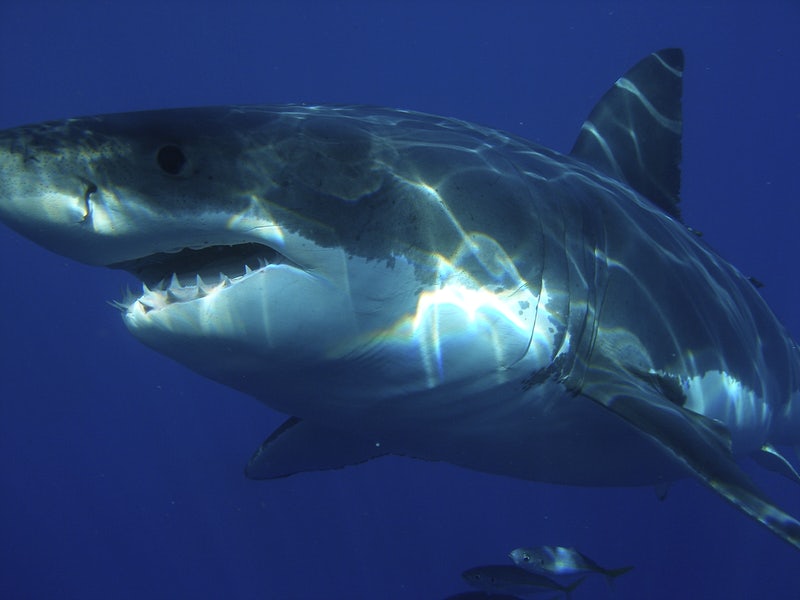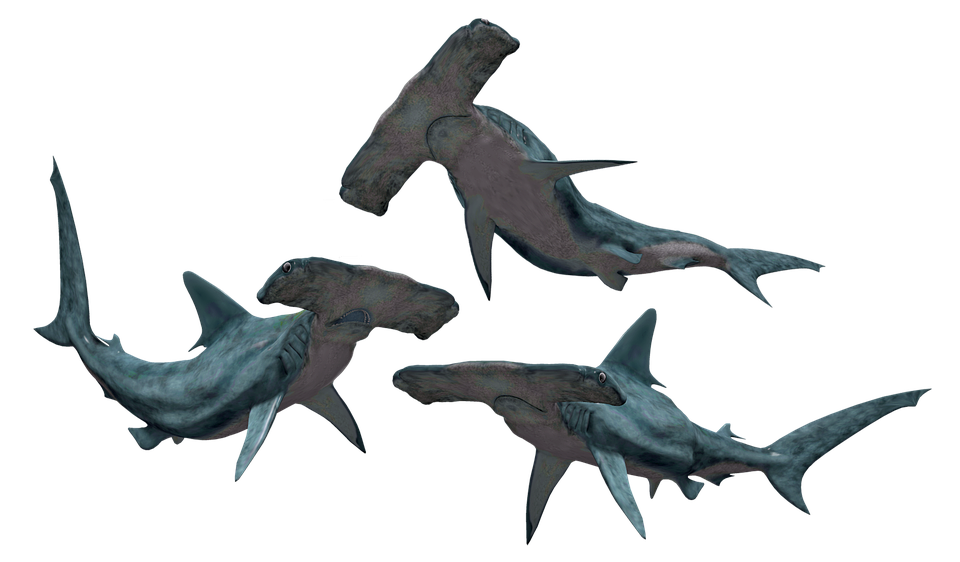Sharks are fascinating creatures. They are intimidating yet necessary to maintain the marine ecosystem. There are over 400 species of sharks on earth. Here, we will do a comparative study of Hammerheads and Great Whites.
Hammerhead sharks have hammer-shaped heads and are one of the endangered shark species. There are two sorts of hammerheads: one with standard size and another with a larger size, known as great hammerheads. On the contrary, Great White sharks are one of the most vicious and aggressive shark species. Therefore, they are classified as apex predators.

Even though both sharks species are well-known for their distinct features and characteristics, we shall compare them in this article. We’ll look into several aspects of both of these animals to see who comes out on top.
So, stick with this essay because the sections below will take you on a thrilling shark trip.
Hammerhead Shark vs. Great White Shark Comparison
Before we delve deep into the comparative analysis of different aspects of these sharks, here is a table that summarizes the basic facts.
| Comparing Parameters | Hammerhead Sharks | Great White Sharks |
| Scientific name | Sphyrnidae | Carcharodon carcharias |
| Species | 9 | 1 |
| Family | Sphyrnidae | Lamnidae |
| Genus | Sphyrna | Carcharodon |
| Head shape | Hammer | Wedge |
| Distribution | Worldwide tropical waters | Saltwater |
| Weight | 500 lbs | 4000 lbs |
| Length | 13 feet (approx.) | 20 feet (approx.) |
| Swim speed | 25 mph | 25 mph Short bursts of 35 mph |
| Cannibalism | Yes | Yes |
| Bite force | 4700 pounds per square inch | 4000 pounds per square inch |
| Danger to humans | Less likely | Most likely |
| Lifespan | 20 and 35 years | Up to 70 years |
Hammerhead Shark vs. Great White Shark: Size

The appearance and dimension of these sharks distinguish them from each other. You can look at their size and tell the difference, along with predicting which one will be at the top.
Great white sharks stand at 20 feet, which is 7 feet longer than the average size of a hammerhead shark. Moreover, great whites can weigh up to 4000lbs, which is a whopping figure compared to 500 lbs hammerhead sharks. The size of great white sharks gives them the advantage over the hammerheads, as they can easily chase and devour the latter.
Hammerhead Shark vs. Great White Shark: Bite Force
Every carnivorous creature comes with a specific bite force. The more the bite force is, the more aggressive the creature is considered.
The biting force of hammerhead sharks is 4700 pounds per square inch, which is higher than that of great white sharks. In fact, this shark’s bite force is so powerful that it may quickly destroy a turtle shell. On the other hand, a great white shark has a bite force of 4000 pounds per square inch, which can crush rays and other small marine organisms.
Here, it is interesting to note that although a bull shark has the most powerful pound-to-pound bite force, it can be toppled by an 18-foot-long great white owing to the latter’s size.
Hammerhead Shark vs. Great White Shark: Respiratory System
The respiratory system of sharks has piqued the interest of numerous experts. They are devoid of lungs. They do, however, continue to breathe. Let’s look at and compare the two sharks’ respiratory systems.
Both hammerhead and great white sharks breathe by obligate ram ventilation. Therefore, these sharks need to keep swimming to maintain breathing. In this light, it’s worth noting that great white sharks swim with their mouths open to allow oxygen-rich water to flow through their gills.
Hammerhead Shark vs. Great White Shark: Resting Habit

It might intrigue you to learn if sharks can sleep or rest like other living beings. Yes, they rest. But is there any difference in the resting pattern between hammerheads and great whites?
Neither hammerheads nor great whites can rest at the bottom of the ocean in a static position. This is so because they need to move constantly to avoid drowning and suffocating. As a result, these sharks have been seen to alternate between active and restful phases rather than sleeping fully.
It’s worth noting, too, that Hammerheads can cover their eyes with the nictitating membrane while resting. On the other hand, great white sharks lack this membrane and frequently move their eyes backward while relaxing.
Hammerhead Shark vs. Great White Shark: Level of Aggression
Sharks, regardless of species, appear to be frightening. Nonetheless, the degree of hostility varies by species and type. In this context, let’s compare hammerhead sharks and great white sharks.
Hammerhead sharks are a less aggressive species when compared to great whites. If not provoked, these sharks are less prone to attack humans and prefer to pursue prey underwater. In contrast, great white sharks are one of the most dangerous shark species. They are aggressive towards humans and other sharks, including hammerheads.
Great white sharks are opportunistic feeders, so keep that in mind. It means they’ll go after any easy prey, regardless of the type. With 314 unprovoked attacks on people, great white sharks have remained the undisputed king of aggression.
Hence, great white sharks are killer machines, and it is preferable to avoid them.
Hammerhead Shark vs. Great White Shark: Food Habit
Sharks are all carnivores. Depending on their size, they may have different diets. Let’s take a closer look at hammerhead sharks and great white sharks.
The majority of hammerhead sharks prefer to eat stingrays. Squids, octopi, smaller fishes, crabs, and other sharks are examples of prey also included in their diet. On the other hand, young great white sharks hunt stingrays, while grown ups prefer turtles, sea lions, seals, and even hammerhead sharks.
The manner these two species assault their prey is different. While hammerheads like to hold their victims to the seafloor with their heads until they are too weak to retaliate, great white sharks always shake their heads sideways, enabling their serrated teeth to rip large portions of meat from their prey.
Hammerhead Shark vs. Great White Shark: Lifespan
Sharks are mortals, and although they live long, their lifespans differ. So, is there any difference between the longevity of hammerheads and great whites?
It is estimated that hammerhead sharks tend to live between 20 and 30 years, while a great white shark can live 70 years.
Hammerhead Shark vs. Great White Shark: Who Will Win?
So, we conducted a thorough comparison of both shark species. Now it’s time to see who triumphed over whom.
Because of all of the features of great white sharks, it is safe to predict that they will win. Great white sharks are vicious predators who have remained at the top of the food chain. As a result, they are the ocean’s top predators. Even though great hammerheads can easily compete with them, they are the ones that are more likely to win the fight.
Summary
As a result of the above comparison study, we can better understand the differences between Hammerhead sharks and Great White sharks. Although the latter appears to have an advantage over the former, both species are unique. They have many similarities and differences. But they are unique in their respective areas. On the other hand, humans are hunting both for their fins, skin, liver oil, and flesh.




